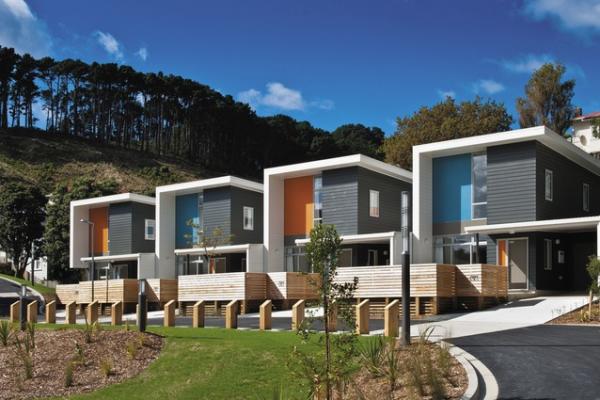In the future, living in medium-density housing in Auckland, Wellington and Christchurch may become as common as in Sydney or London.

BRANZ general manager of industry research, Dr Chris Litten, said poor understanding of how to consistently build high-quality, affordable medium density housing specific to New Zealand conditions affected how it was perceived.
Add varying levels of community acceptance and a general lack of clarity around the medium density housing building consent process, and it is clear medium-density housing was not well understood here.
“Medium-density housing (MDH) is likely to make up a third of New Zealand’s new dwellings by 2025. This means it is crucial we understand both the attitudinal and practical barriers to developing MDH in New Zealand.”
These findings are part of a multi-year wide-ranging programme of research work by BRANZ to first identify the barriers to building suitable MDH, and then to suggest solutions to overcoming these barriers.
The lack of an agreed industry-wide definition meant the first priority of the research programme was defining what is meant when talking MDH. This work has defined MDH for the purposes of the research programme: “multi-unit dwellings up to six storeys”.
Further work looked at the supply and demand of MDH and then, just as importantly, the attitudes of New Zealanders toward living in, and close to, MDH.
Supply and demand
With a large backlog of unmet demand, housing is becoming less affordable, predominantly in the main centres, and MDH is seen as one of the solutions to ease this issue.
Population growth, demographic changes, and lifestyle trends are driving demand for more homes and a greater variety of housing options in New Zealand.
The research determined MDH currently makes up 23% of all new dwellings and is projected to grow over the next 9 years. By then, MDH units will represent 33% of all new dwellings with Auckland predicted to have 51% of all new MDH.
Increasing numbers of local and regional councils are adding MDH goals and predictions into their growth management strategies and policies. They are engaging in new ways of trying to support growth through policy reform and initiatives such as Special Housing Accords.
“Local authorities see MDH as a way to develop multiple residences at once while also ensuring the quality of city living is maintained. There are strong examples of good MDH complexes out there,” Dr Litten said.
However, there was a gap between MDH planning policy and implementation. BRANZ research will continue to look at identifying the barriers and developing tools so government and the building industry could meet housing demand, he said.
New Zealand attitudes to MDH
Holding on to the New Zealand dream of a stand-alone home came out top for the majority of those surveyed on their attitudes towards MDH and other types of housing.
Surveying more than 1600 householders across New Zealand it was interesting to note those who had previous experience of living in MDH were less resistant to the concept.
However, most interviewees perceived MDH neighbourhoods as less safe, less community-focused and less visually appealing than neighbourhoods of stand-alone houses.
Dr Litten said more research work was required to investigate the persistence of NIMBYism around MDH.
He said there were great examples of high-quality, attractive MDH developments that demonstrate how MDH can make cities very liveable. One example is Hobsonville Point in Auckland. Until relatively recently it was a defence base, but is now being developed into a large scale mixed housing typology development which includes many examples of MDH. When completed Hobsonville Point will have 4,500 residences and be home to around 11,000 Aucklanders.
Resources, including best practice guidelines will be developed through this research programme aiming to aid in the development of more MDH complexes at the same high quality, Dr Litten said.
“The reality is that we need MDH to meet our cities’ housing needs so it’s in everyone’s interests that we have the systems in place in enable better buildings for all New Zealanders.”
The relevant reports can be downloaded from www.branz.co.nz/mdh
About BRANZ
BRANZ (Building Research Association of New Zealand) is New Zealand’s independent and impartial research, testing and consulting organisation. BRANZ works with the building and construction industry to provide better buildings for New Zealanders. The BRANZ Incorporated Society is a non-profitable investor in industry good research and knowledge transfer. It invests in research and information to achieve benefits for New Zealanders by improving the knowledge base of the building and construction industry



